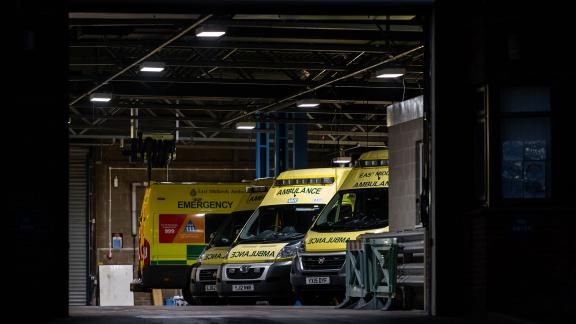Significant investment into NHS community services would lead to a marked reduction in A&E footfall and ambulance call outs

New independent research commissioned by the NHS Confederation shows that the more the health service budget is invested in pump priming community services the more it reduces hospital admissions and the more savings it brings to the wider NHS - notably in acute care services.
The figures show that for every £100 spent in the NHS community care sector, delivering care to patients closer to and in their own homes, there is a £131 (31 per cent) return on investment in acute sector savings – money that would have been spent providing care to patients in hospitals and across acute services. This is due to reduced hospital admissions and fewer people being taken to hospital in an ambulance.
The findings demonstrate how those areas of the country that spent relatively less on community care in terms of population need have also seen, on average, higher levels of hospital and emergency activity, compared to those spending relatively more.
Specifically, those of the 42 integrated care systems that invested more in community care saw 15 per cent fewer non-elective patient admissions and 10 per cent fewer people being taken to hospital in an ambulance per year. Those systems also saw lower average activity for elective patient admissions and A&E attendances.
The latest report in a series of commissioned research by the NHS Confederation and conducted by Carnall Farrar, examines in detail how investment in community care services in England is currently distributed, and the ‘significant potential’ an increase in targeted investment in community service provision could reap.
The numbers show that higher community spend would lead to a direct reduction in acute demand through savings in acute activity if a causal relationship between the two is assumed. This would lead to an average 31 per cent return on investment and a net saving of around £26m per year for an average-sized Integrated Care System.
Matthew Taylor, chief executive of the NHS Confederation said:
“This analysis shows what we have long suspected – that investing in community services not only helps to reduce hospital admissions and demand on ambulances, but that it also saves the NHS money.
“Successive governments have long held the ambition to shift more care out of hospitals and into the community, but this has never fully materialised. With NHS budgets under huge strain, this analysis shows why it is so important to finally deliver on this long-held ambition. It’s not only better for patients to be treated in or closer to their homes, but it’s also better for the taxpayer.
“This transition can’t happen overnight and there would need to be a period of double running before we could expect to see spend in the acute sector come down. But if we are going to place the NHS on a more sustainable footing over the long term, then this is exactly the type of shift in resources that we need to deliver.”
Ben Richardson, managing partner at Carnall Farrar added:
"Our work shows that community services should be treated as the key to unlock system productivity and reduce pressure on the acute sector. Community care can help people who need more support to remain independent and avoid being in hospital, especially older people.
“Our research shows that areas that spend more on community care relative to need experience lower acute demand, including 15% lower non-elective admission rates and 10% lower ambulance conveyance rates.
“Additionally, we found that, despite this critical link, there is no relationship between the amount invested by NHS organisations in community care and their population community care needs. We believe this is due to the lack of a standard offer for community care and because allocation of funds to community providers is entirely at local discretion, leading to community services receiving the residual amount left after spending on everything else.
“It is through our unique access to five years of row-level patient data, across acute and community care, combined with publicly available national datasets and spending data that we have been able to understand the impact of investment in the community sector on system productivity.
“We strongly believe that the starting point for unlocking this potential is to prioritise, standardise, and incentivise community data collection - and using it to develop a standard offer in every ICS of what the population can expect."
The report makes a series of recommendations to national government, NHS England and local leaders. These include:
- Prioritising community spend as a mechanism for reducing long-term pressure on the acute sector, as a crucial contributor to healthcare system productivity and as a direct lever to providing improved patient care.
- The need for a recognition that additional central government investment in community care will be required and that systems should be afforded a minimum of two years to double run with the acknowledgment that as systems shift to an emphasis on more preventative, upstream care, the return on investment will not be immediate.
- Incentivising investment in community care through appropriate payment mechanisms, as a means of reducing long-term pressure on the acute sector especially as winter approaches. This should include developing approaches to tackle the community backlog in a similar way to the elective one.
- The development of a clearer definition of community care, including what it is, what services fall under its remit, and where there are gaps between statutory and non-statutory services.
- Prioritising data gathering that better informs the value of community services, including its funding, spending, demand, activity, availability, access, quality, and impact.
This latest report builds on the findings from previously commissioned NHS Confederation research reports, including Creating better health value understanding the economic impact of NHS spending by care setting published in August. This showed that for every £1 invested in community or primary care, there is up to a £14 return back into the local economy through gross value added (GVA).
In 2022 the first report in the series From safety net to springboard also demonstrated that for every £1 spent across the NHS as a whole, there was a £4 return on investment.



